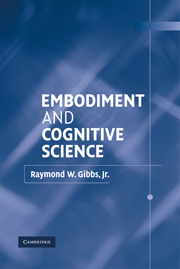7 - Cognitive Development
Published online by Cambridge University Press: 05 June 2012
Summary
Developmental psychologists have long debated the role of early embodied action in cognitive development. Since Piaget's (1952, 1954) writings on how sensorimotor activity underlies different aspects of cognitive growth, psychologists have considered ways of linking patterns that emerge from young children's bodily and perceptual experience with later intellectual development. Many psychologists now argue that children's acquisition of significant conceptual abilities is rooted in innately given knowledge, whereas others emphasize the child's active looking and listening skills. Yet neither of these positions gives appropriate attention to the child's self-generated movements and felt sensations in learning to perceive, think, and engage in intelligent behavior. Scholars such as Dewey (1934) and Montessori (1914) earlier emphasized the importance of “learning by doing,”but there has not been enough concern with how kinesthetic action serves as the potential building block for conceptual development. This chapter describes ideas and empirical evidence in support of the embodied grounding for cognitive development.
Piaget's Contribution
Jean Piaget's seminal investigations of child development assumed that growth is a form of individual adaptation to the environment. Even small infants exhibit intelligent behavior, not by thinking, but by acting physically in the world (Piaget, 1952). Two principles of biological adaptation, assimilation and accommodation, provide the mechanism for development of intelligent action. Assimilation refers to the process by which infants use their existing abilities when responding to environmental challenges. Accommodation refers to the process of changing one's existing abilities to adaptively deal with some task or situation.
Information
- Type
- Chapter
- Information
- Embodiment and Cognitive Science , pp. 208 - 238Publisher: Cambridge University PressPrint publication year: 2005
